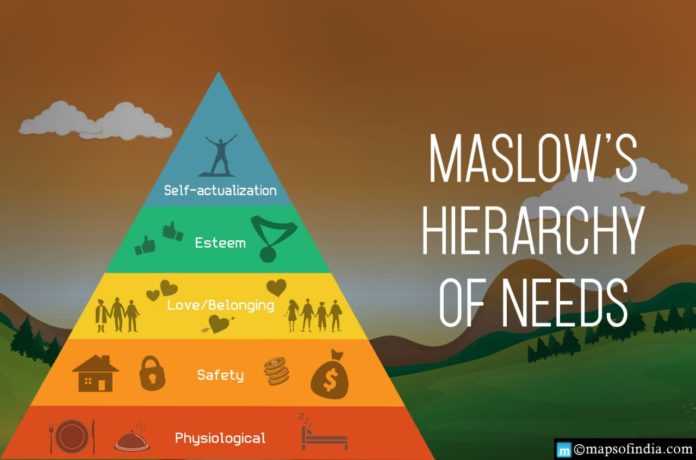Maslow initially proposed a hierarchy of human needs in his 1943 study “A Theory of Human Motivation” and the following book, Motivation and Personality. According to this hierarchy, people are driven to meet basic wants before moving on to more complex requirements. While several established schools of thought (such as psychoanalysis and behaviourism) focused primarily on undesirable behaviours, Maslow was keen to explore what makes individuals happy and do to reach the goal.
Maslow, as a humanitarian, thought that humans had an instinctual drive to be self-actualized or achieve self-actualization. Nevertheless, many more basic needs, such as hunger, security, affection, and self-esteem, must be fulfilled to accomplish these overall objectives. Maslow’s hierarchy of needs is divided into five levels.
Here is Maslow’s hierarchy of needs, beginning with physiological conditions:
- Physiological needs
Physiological needs are the first of Maslow’s hierarchy’s d-driven (deficiency) basic needs. Water and food, enough rest, clothes and shelter, overall wellness, and reproduction are fundamental human survival needs. According to Maslow, these basic physiological needs must be met before people progress to the next stage of pleasure.
- Safety needs
When an individual’s physiological needs are met, the desire for security and safety arises. In addition, people desire order, stability, and control in their life. These requirements can be completed by the family and the society, such as police, schools, business and medical care. Emotional security, financial security, law and order, social stability, property, health and well-being are only a few examples.
- Love and Belonging
Maslow’s hierarchy of needs continues with the need to be loved and accepted. This need encompasses both romantic connections and bonds to friends and family members. It also involves our wanting to feel as though we are part of a social group. It is important to note that this need includes both the wish to be loved and the desire to be loved by others.
- Esteem needs
Ego-driven demands drive the higher needs, which begin with esteem. Self-respect and self-esteem are the critical components of esteem (confidence in your potential for personal growth and accomplishments). Maslow distinguishes two sorts of self-esteem: esteem focused on respect and appreciation from others, and esteem focused on your self-assessment. This later sort of self-esteem gives rise to self-assurance and freedom.
- Self-actualization needs
The top-level in Maslow’s hierarchy is self-actualization needs, which pertain to realizing one’s potential, self-fulfilment, pursuing personal progress, and peak experiences. Maslow defines this level as the ambition to achieve all possible, to become the finest that one can be.
Humans may sense or focus on this urge with great intensity. For example, one person may have a great desire to become the perfect parent. In another, the appetite may display itself economically, intellectually, or athletically. Finally, others may express it artistically via paintings, drawings, or creations.




